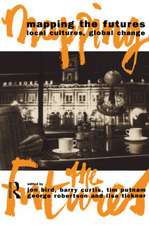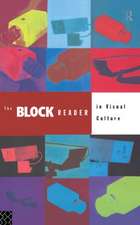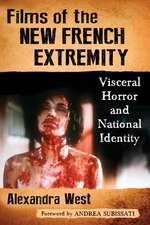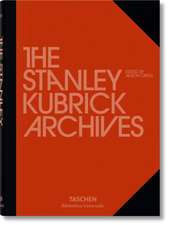Dark Places: The Haunted House in Film: Locations
Autor Barry Curtisen Limba Engleză Paperback – 14 feb 2009
Horror films revel in taking viewers into shadowy places where the evil resides, whether it is a house, a graveyard or a dark forest. These mysterious spaces foment the terror at the heart of horror movies, empowering the ghastly creatures that emerge to kill and torment. With Dark Places, Barry Curtis leads us deep inside these haunted spaces to explore them – and the monstrous antagonists who dwell there.
In this wide-ranging and compelling study, Curtis demonstrates how the claustrophobic interiors of haunted spaces in films connect to the ‘dark places’ of the human psyche. He examines diverse topics such as the special effects – ranging from crude to state-of-the-art – used in movies to evoke supernatural creatures; the structures, projections and architecture of horror movie sets; and ghosts as symbols of loss, amnesia, injustice and vengeance. Dark Places also examines the reconfiguration of the haunted house in film as a motel, an apartment, a road or a spaceship, and how these re-imagined spaces thematically connect to Gothic fictions.
Curtis draws his examples from numerous iconic films – including Nosferatu, Psycho, The Texas Chainsaw Massacre and The Shining – as well as lesser-known international works, which allow him to consider different cultural ideas of ‘haunting’. Japanese horror films and their Hollywood remakes – such as Ringu and The Ring, or Juon and The Grudge – come under particular scrutiny, as he explores Japanese cinema’s preoccupation with malevolent forces from the past.
Whether you love the splatter of blood or prefer to hide under the couch, Dark Places cuts to the heart of why we are drawn to carnage.
In this wide-ranging and compelling study, Curtis demonstrates how the claustrophobic interiors of haunted spaces in films connect to the ‘dark places’ of the human psyche. He examines diverse topics such as the special effects – ranging from crude to state-of-the-art – used in movies to evoke supernatural creatures; the structures, projections and architecture of horror movie sets; and ghosts as symbols of loss, amnesia, injustice and vengeance. Dark Places also examines the reconfiguration of the haunted house in film as a motel, an apartment, a road or a spaceship, and how these re-imagined spaces thematically connect to Gothic fictions.
Curtis draws his examples from numerous iconic films – including Nosferatu, Psycho, The Texas Chainsaw Massacre and The Shining – as well as lesser-known international works, which allow him to consider different cultural ideas of ‘haunting’. Japanese horror films and their Hollywood remakes – such as Ringu and The Ring, or Juon and The Grudge – come under particular scrutiny, as he explores Japanese cinema’s preoccupation with malevolent forces from the past.
Whether you love the splatter of blood or prefer to hide under the couch, Dark Places cuts to the heart of why we are drawn to carnage.
Preț: 131.27 lei
Nou
Puncte Express: 197
Preț estimativ în valută:
25.13€ • 25.78$ • 21.16£
25.13€ • 25.78$ • 21.16£
Carte disponibilă
Livrare economică 05-19 februarie
Livrare express 21-25 ianuarie pentru 21.47 lei
Preluare comenzi: 021 569.72.76
Specificații
ISBN-13: 9781861893895
ISBN-10: 1861893892
Pagini: 256
Ilustrații: 70 halftones
Dimensiuni: 121 x 170 x 18 mm
Greutate: 0.3 kg
Ediția:2
Editura: REAKTION BOOKS
Colecția Reaktion Books
Seria Locations
ISBN-10: 1861893892
Pagini: 256
Ilustrații: 70 halftones
Dimensiuni: 121 x 170 x 18 mm
Greutate: 0.3 kg
Ediția:2
Editura: REAKTION BOOKS
Colecția Reaktion Books
Seria Locations
Notă biografică
Barry Curtis is professor emeritus of visual culture at Middlesex University. He has written widely on film, architecture, art, and visual culture for magazines, newspapers, and journals.
Cuprins
Introduction
The Haunted House
Gothic and the Uncanny
Film: 'A Fragile Semblance'
Unreal estate
Conclusion
References
Recenzii
"One of the most intriguing recent movie-related books I've come across in a while. Curtis has an especially deft hand with examining how a wide variety of cultural influences, from the Gothic to the Surrealists, converge to shape the 21st century notion of the ghost story."















